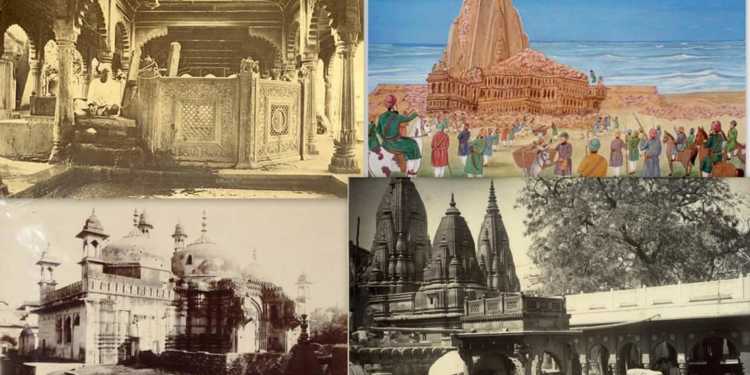There has been palpable enthusiasm after the recent Supreme Court judgment regarding the status of a Mosque and the power of the state to acquire it like any other place of worship. This has paved the way for a verdict in the long pending Ram Janmabhoomi dispute. The apex court having decided the question of acquisition of a Mosque, the Ayodhya dispute is now purely a property matter to be decided on merits of the case. Regular hearing will commence on the matter from October 29.
The Ayodhya dispute has almost always been in limelight. It has been seen as an evidence of the barbarity of medieval era Islamic rule. However, very often this also means that our thought process gets limited to just one site. It is assumed that Ayodhya is a unique site in the sense that the temple on the site was demolished and a Mosque was constructed on its ruins. Even though the barbaric reality of the Islamic rule and the demolition of a number of temples is no longer hidden despite strenuous efforts to paint the Islamic rule as benevolent by the leftist liberal cabal, emphasis on the Ayodhya dispute tends to overshadow a number of such other sites.
There are around 300 temples in Uttar Pradesh where evidence has been found of temples being demolished to construct mosques, dargahs and other Muslim monuments. In these cases, the Muslim monuments have been built on the ruins of the demolished Hindu temples. These monuments stand testimony to the excesses of Islamic rule. They also go on to show the brutish, autocratic and Hindu hating character of the Islamic rule. Almost all districts in the state consist of scores of such sites where Hindu temple were mercilessly demolished in order to build Mosques on their remains. Many of these sites where Hindu temple existed now have significant Mosques, dargahs and other Muslim monuments built over them. Examples being the Salim Chisti Dargah, the Maqbara of Akbar, Fatehpur Sikri complex, etc. This was a classic case of the invader showing its strength and authority over the invaded. The idea was to break the backbone of the Hindu psyche.
The alliance of self acclaimed intellectuals, vote bank politicians, news traders and most importantly left leaning historians have been constantly trying to project Muslim invasion and rule as benevolent. Leave alone criticising the excesses and blatant cruelty during the medieval era Islamic rule, these Lutyens’ elite constantly try projecting Muslim and Mughal rule as something good for India. Elitist historians claim, “Political relations should be examined in terms of the politics of the time. Conflicts of a routine kind were clearly local and more casual than has been assumed.” Therefore, all excesses during the Muslim rule are to be dismissed as mere ‘local and casual conflicts’. These conflicts of a routine nature which have been allegedly exaggerated led to the demolition of around 300 Hindu temples in Uttar Pradesh alone.
The number of around 300 Hindu temples which have been demolished is a strictly rough number. It includes only those sites where evidence of temples having been demolished exists. Apart from them, there must be many temples which were demolished and no evidence of their remains was left. The actual number of Ayodhya like sites where temples were mercilessly demolished must be much higher. Ayodhya is not the only mark of the hostility and barbarity of Muslim rule in Uttar Pradesh, there are many Ayodhyas across the north Indian state.


































